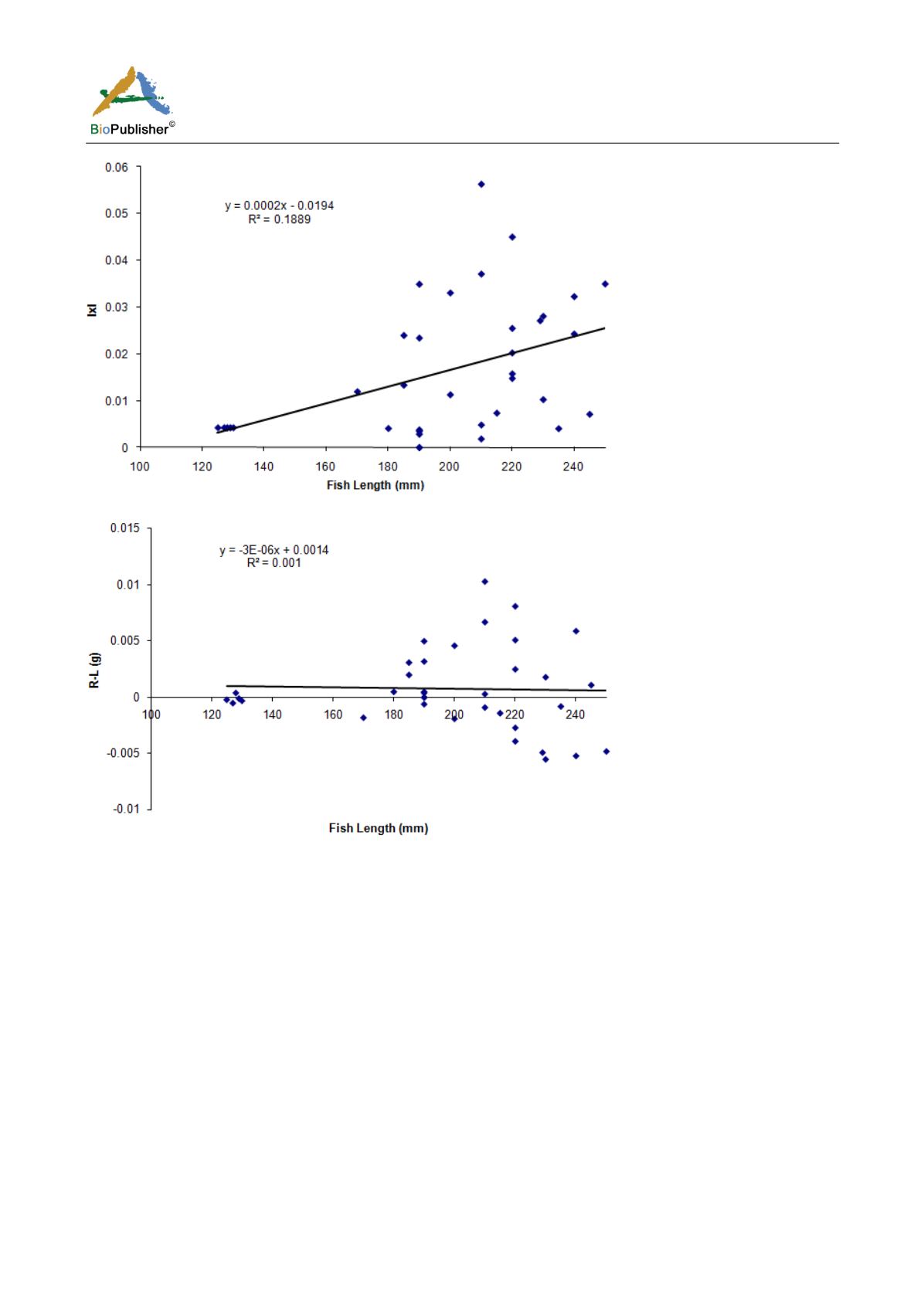
International Journal of Marine Science, 2017, Vol.7, No.37, 366-370
368
Figure 2 Absolute otolith mass asymmetry as function of fish length
Figure 3 Saccular otolith mass difference in
Lutjanus ehrenbergii
as a function of fish length
The function of the ear of the fish can be disturbed because of the difference in the weight of the otolith
(Lychakov and Rebane, 2004; 2005). As in the previous cases on several fish species, including the lutjanid fish
observed, otolith weight non-asymmetry is low (|x| < 0.5), irrespective of fish size. This low level of otolith
asymmetry is one of the features of both the hearing organs. Lychakov and Rebane (2005) have indicated that
fishes with large otoliths and |x| > 0.2 may, in theory, develop difficulties with sound processing due to
inconsistency and peculiarity of the movement of the two otoliths in the head of the fish. Consequently, large
number of fish species can avoid the loss in hearing ability of their otolith mass non-asymmetry is ranging below
the value (0.2< X < +0.2).
This study showed results support those acquired for a number of fish species, where otolith mass non-asymmetry
dissociate with the fish length (Jawad et al., 2017). Nevertheless, the relationship of the otolith mass difference
and fish size is complicated. This study showed that this correlation is very ineffectual and near non-absence.
Lychakov and Rebane (2004) have revealed comparable results on a number of fish species and suggested that the
minimal correlation or non-appearance of such association may because to the small number of samples studied,
with specimens are very close in their sizes.


